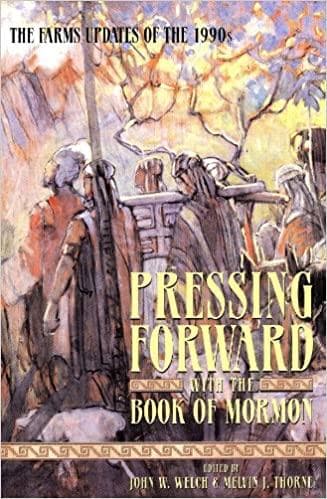Book
69 Chapters

“Have ye any that are lame, or blind, or halt, or maimed, or leprous . . . ?” (3 Nephi 17:7)
Speaking to the Nephites assembled at the temple in Bountiful, the risen Jesus Christ said, “Have ye any that are lame, or blind, or halt, or maimed, or leprous . . . ? Bring them hither and I will heal them” (3 Nephi 17:7). Yet medical researchers do not believe that leprosy per se existed in ancient America. How can we resolve this apparent conflict between what the Book of Mormon describes and what modern researchers have concluded?
Answering such a question always demands that we first look carefully at the text. It seems safe to suppose that behind Joseph Smith’s translation of “leprous” in 3 Nephi would have been the Hebrew word that is consistently translated leprosy in the Old Testament. That Hebrew term is ṣāraʿat. The Jewish scholars in Alexandria who put the Old Testament into Greek (the Septuagint) used Greek lepra as the equivalent of ṣāraʿat. Lepra is regularly referred to in the Gospels where it is translated “leprosy.”
A sizable body of scholarly writing has tried to identify what medical condition fits the Bible’s statements regarding the nature, incidence and cure of ṣāraʿat and lepra.1 The somewhat surprising conclusion is that ṣāraʿat “is not leprosy and does not include it.”2The Old Testament statements about the lesions and symptoms simply do not fit leprosy. In fact the known history of disease and medicine suggests that “it is doubtful if leprosy existed at all in the Ancient Near East at the time of the Old Testament,”3 although it is possible that true leprosy had reached Judea by the time of Jesus and could have been included by New Testament writers with the diseases previously encompassed under the term ṣāraʿat.4 Finally, the result of this research concludes simply that ṣāraʿatdenoted “several types of skin lesions which exhibit exfoliation or scaling of the skin”5 but were not leprosy per se. Thus it appears that the English translations of the Old Testament use leprosy to refer to skin conditions that were not epidemiologically leprosy.
Thus it is highly unlikely that Lehi’s or Mulek’s parties could have brought real leprosy with them to the New World. To what disease, then, might the Savior have referred in calling for the Nephite “leprous” to be brought to him to be healed? Two candidates are uta (leishmaniasis) and Chagas’ disease. Both attack the mucous membranes of the face and cause an appearance like leprosy.6 Another skin disease that was present in ancient America is called pinta; it discolors the skin with light blotches that sound like one of the symptoms of ṣāraʿat.
Among the Aztecs, Father Sahagun reported that one of the diseases attributed to the god Tlaloc was what he translated to Spanish as “leprosy.”7 Meanwhile among those few of the dead who were deemed eligible to enter the paradisiacal land of the Tlalocs, the rain gods, were those with “certain incurable skin diseases,” including what Sahagun had called “leprosy.”8
It is reasonable, therefore, to suppose that several kinds of skin diseases existed in the American land of the Nephites which would have recalled to Book of Mormon writers the ṣāraʿat or “leprosy” of the Old Testament. When Jesus called for those suffering from those ills to come forward, the Book of Mormon term leprous would serve to denote their condition just as accurately as in the case of the Bible and its peoples.
We can see leprosy in the Book of Mormon text as one in a substantial series of terms which prudent readers will understand to demand careful explication before their actual meanings are clear.
Research by John L. Sorenson, originally published as a FARMS Update in Insights (September 1994): 2.
1. See David P. Wright and Richard N. Jones, “Leprosy,” in Anchor Bible Dictionary, ed. David N. Freedman (New York: Doubleday, 1992), 4:277–82; for further references see M. Gary Hadfield, “Neuropathology and the Scriptures,” BYU Studies 33/2 (1993): 327, nn. 18–21.
2. Wright and Jones, “Leprosy,” 278.
3. Ibid.
4. See ibid., 281.
5. Ibid., 279.
6. See Suzanne Austin Alchon, Native Society and Disease in Colonial Ecuador (Cambridge: Cambridge University Press, 1991), 20.
7. Codex Florentino 1:287.
8. J. Eric S. Thompson, Mexico before Cortez: An Account of the Daily Life, Religion, and Ritual of the Aztecs and Kindred Peoples (New York: Scribner’s, 1933), 50.
Book
69 Chapters
Items in the BMC Archive are made publicly available for non-commercial, private use. Inclusion within the BMC Archive does not imply endorsement. Items do not represent the official views of The Church of Jesus Christ of Latter-day Saints or of Book of Mormon Central.